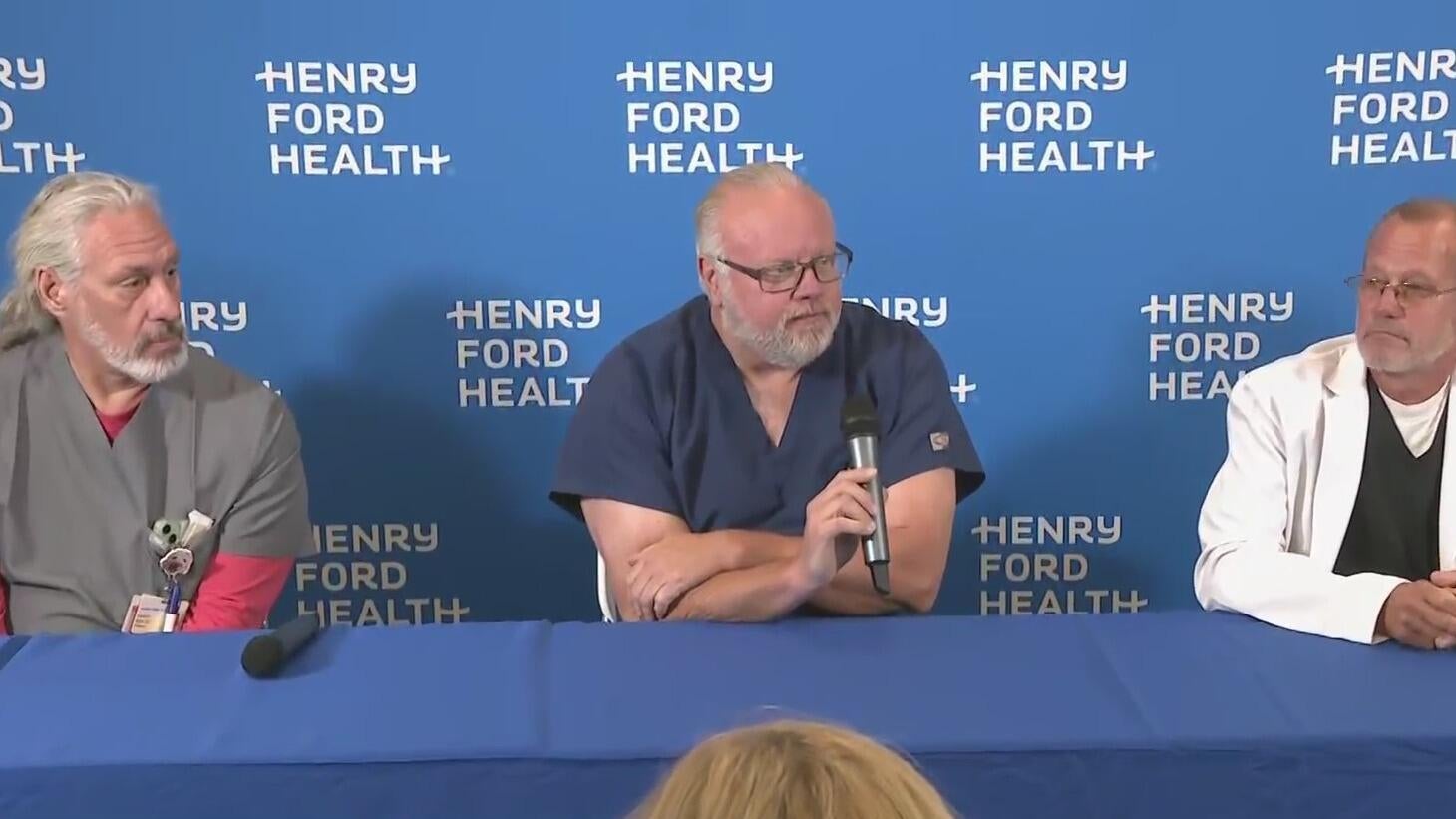Doctors relate their experiences treating patients in deadly Michigan church attack
Three of the doctors who cared for patients in the aftermath of Sunday's attack on a Michigan church met with news media Wednesday to share their thoughts and experiences in handling a mass casualty situation.
Without providing names or detailed medical reports on the victims in the deadly attack, the hospital staff said they took care of one child and seven adults who arrived at Henry Ford Genesys Hospital in Grand Blanc after a shooting and fire erupted at the nearby Church of Jesus Christ of Latter-day Saints.
Henry Ford Genesys treated eight victims injured in the attack that left five people dead, including the shooter, and eight others injured.
The attack happened around 10:25 a.m. Sunday, when police say Thomas Jacob Sanford, 40, of Burton, Michigan, drove his truck into the Church of Jesus Christ of Latter-day Saints on McCandlish Road in Grand Blanc Township, exited his vehicle, and fired "several rounds" from an assault rifle at churchgoers before setting fire to the church.
The FBI is leading the case and has called the attack "an act of targeted violence."
The agency said on Tuesday that over 100 personnel in Michigan and across the bureau are collaborating with the Grand Blanc Township police and fire departments, the Genesee County Sheriff's Office, Michigan State Police, the Bureau of Alcohol, Tobacco, Firearms and Explosives and the U.S. Attorney's Office.
Only three of the eight others injured remain at the hospital; all three are in fair or in improving condition, a hospital spokeswoman said at Wednesday's press conference.
In the meantime, Dr. Alan R. Janssen, Dr. Christopher Ash and Dr. Sanford S. Ross took turns at the microphones, relating what they saw and heard that day in the emergency room.
Medical residents of the hospital were among the congregation members at the church, and some of them were on scene at the time.
"This is deeply personal to our community," Ash said about the medical staff. "These are our people."
Janssen said the first alert the hospital got of the developing situation was actually a message from one of the residents who witnessed the attack, saying, "There's an active shooter at our church." That message arrived before the usual communications from emergency medical services to hospital staff in such a scenario, and with that, the information flew fast among the facility.
Among the logistics that happened quickly, they said, was moving patients who were already on site and cleaning workspaces so as to receive those who were in a crisis situation.
"As I walked into the emergency room, all these patients started rolling through the door," Ash said.
Not just the patients – but off-duty personnel checked in – including a resident who was home and not at church that morning. "People gave up their Sundays, came out of nowhere," Ash said.
Regardless of the circumstances, the medical condition or age of the patient, the doctors said compassion, caring and attention are important parts of treating a trauma patient. Ross recalled providing treatment to the child who came into the hospital and telling him, "You're going to get through this. You're going to be okay."
At the same time, they were sorrowful over the fact that one of the patients who arrived died. "We did everything we could. The wound was just too great," Ross said.
"I feel bad that we didn't have the miracle to save him," Ash said.
Ash also emphasized that there is no reason that such violence should erupt out of disagreements.
"There's really no justification for anybody to have to die for any reason because you don't like the sandbox I play in," he said.





